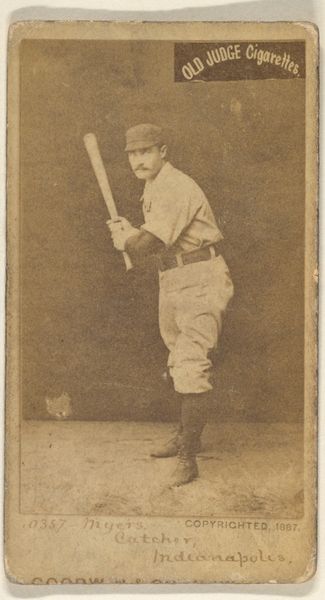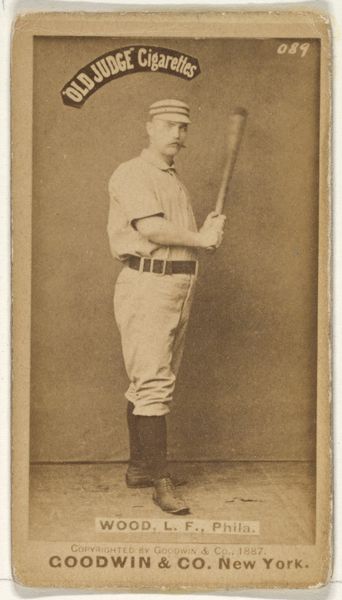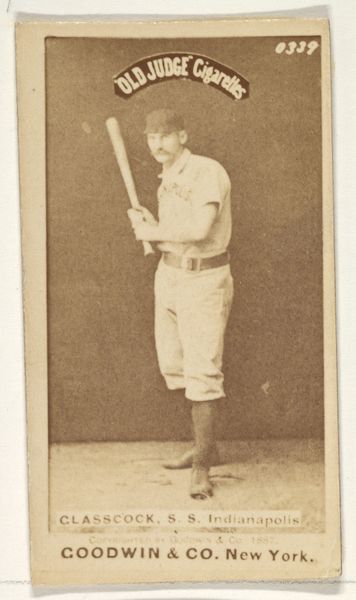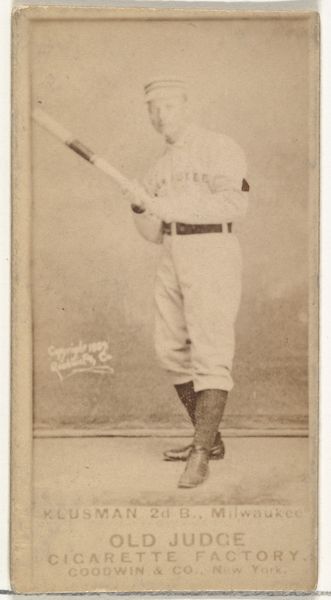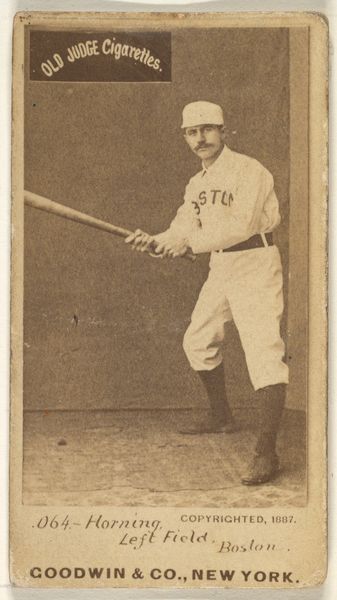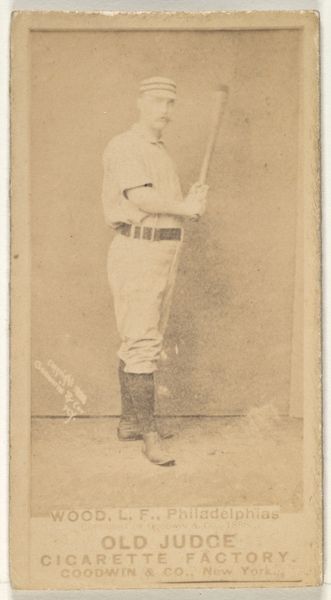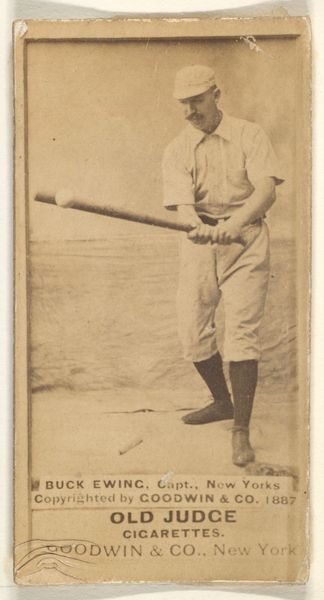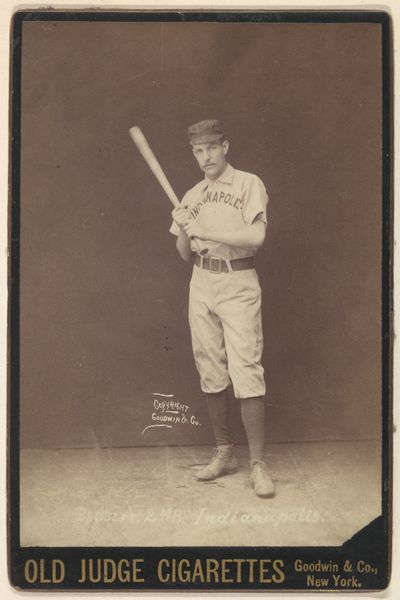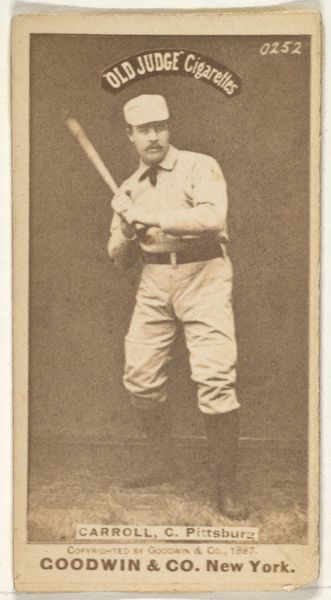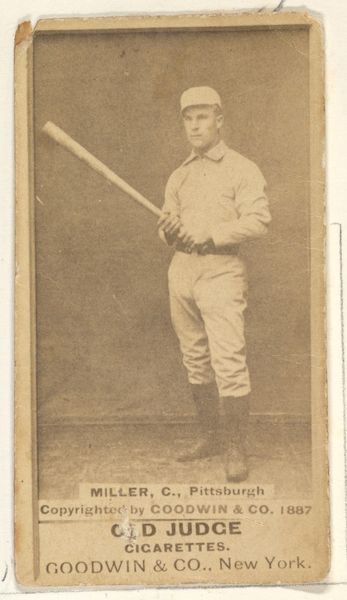
Myers, Catcher, Indianapolis, from the Old Judge series (N172) for Old Judge Cigarettes 1887
0:00
0:00
drawing, print, photography
#
portrait
#
drawing
# print
#
baseball
#
figuration
#
photography
#
19th century
#
men
#
athlete
#
realism
Dimensions: sheet: 2 11/16 x 1 3/8 in. (6.9 x 3.5 cm)
Copyright: Public Domain
Editor: This is a baseball card from 1887, featuring Myers, a catcher from Indianapolis. It’s from the Old Judge Cigarettes series, printed by Goodwin & Company. It’s striking how such an everyday image – an athlete – was reproduced on what was essentially advertising material. What's your take on this piece? Curator: The first thing that grabs my attention is its existence as a promotional item, a small photograph linked directly to consumerism. These weren't "art" objects in the traditional sense; they were produced to sell cigarettes. Consider the material: a photograph reproduced on thin card stock, disposable and designed to circulate widely. How does that challenge our conventional notions of art, its value, and its audience? Editor: So, you're saying its worth is tied to its mass production, not necessarily its aesthetic qualities? Curator: Precisely. Look at the Goodwin & Company’s production methods: assembly lines creating thousands of these cards, employing workers in factories. What were their working conditions like? How were these images consumed, collected, traded? It raises questions about the labor involved and the societal context of baseball, cigarettes, and consumer culture in late 19th-century America. It’s not just a picture of a baseball player; it’s a snapshot of a complex network of production, consumption, and leisure. How does thinking about it that way shift your initial understanding? Editor: I hadn’t considered the labour aspect, or that it blurs the line between art and commercial product. So, it encourages us to investigate the system behind the image itself. Curator: Absolutely. And to understand the artwork as part of a material and social process, it also can hint at historical insights and production values often missed in more traditional analyses.
Comments
No comments
Be the first to comment and join the conversation on the ultimate creative platform.
